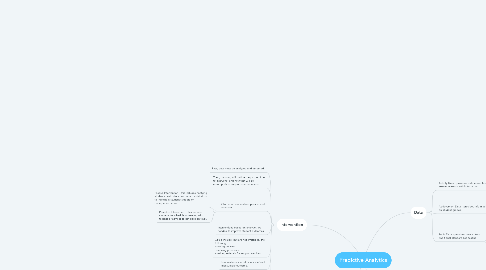
1. Data
1.1. Activity Data - provides data about how learner interacts with information.
1.1.1. Event logs collect data regarding student engagement with discussion forums, content views, etc.
1.1.2. Digital content: publishers can offer analytics to provide insight on time spent on a task, and the completion of course activities.
1.2. Achievement Data - provides information on student grades.
1.2.1. Contextualizing grades is vital to gathering insight on student success and/or needs.
1.3. Static Data - provides results from traditional standardized testing.
1.3.1. Correlations have been made between test results and a students' long-term success.
1.3.2. Static data remains important despite the advent of more dynamic data.
1.3.3. Static data can also include survey data and information about extracurricular activities to assess student attitudes, goals, interests, perceptions, and even fears.
2. Analysis and Implementation
2.1. First, data (outlined above) is collected.
2.2. Data mining identifies patterns that correlate data values with student success outcomes.
2.3. Patterns are used to create and deploy a predictive model.
2.4. Information is collected and analyzed in real-time.
2.5. Analysis is output for action by student, instructor, or administrator.
3. Intervention
3.1. First, data must be analyzed and assessed.
3.2. Then, planning will outline the proper time to intervene, and how that will be accomplish to support student needs.
3.3. 2 forms of intervention: passive and proactive
3.3.1. Passive Intervention - this includes notifying students, instructors, and or administrators to indicate a student struggle or underperformance.
3.3.2. Proactive Intervention - this requires students to schedule a meeting with teacher or advisor to get back on track.
